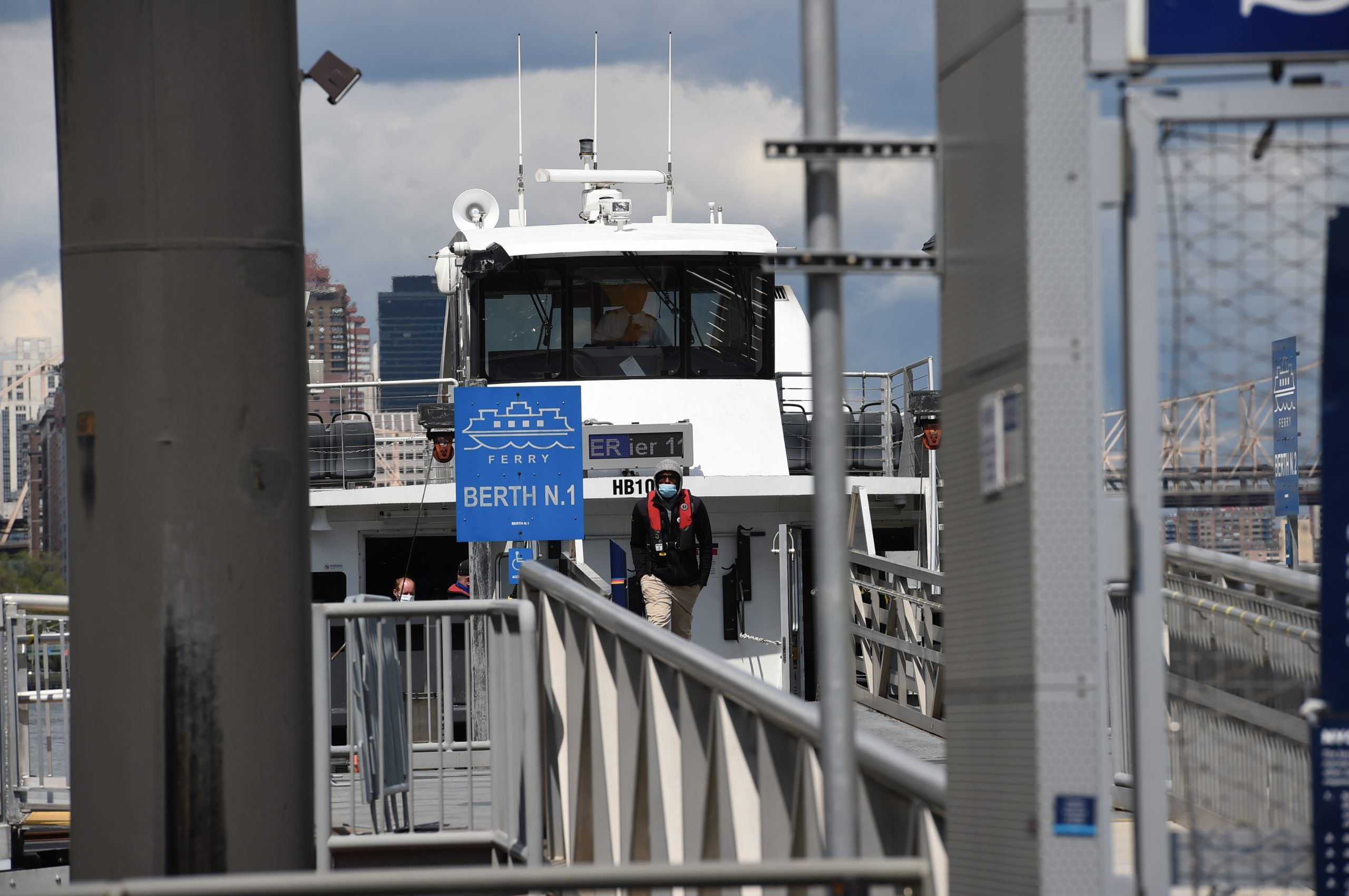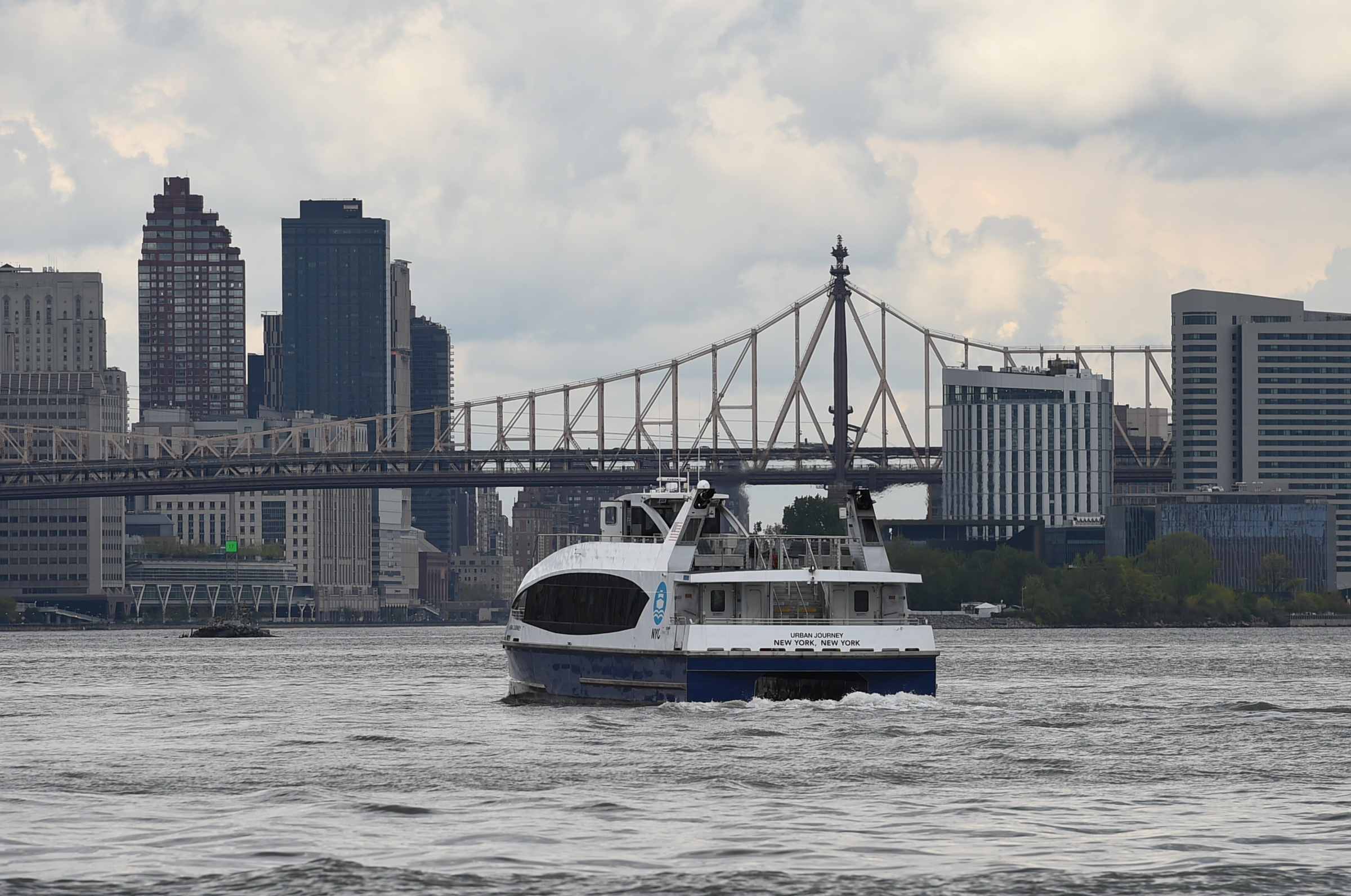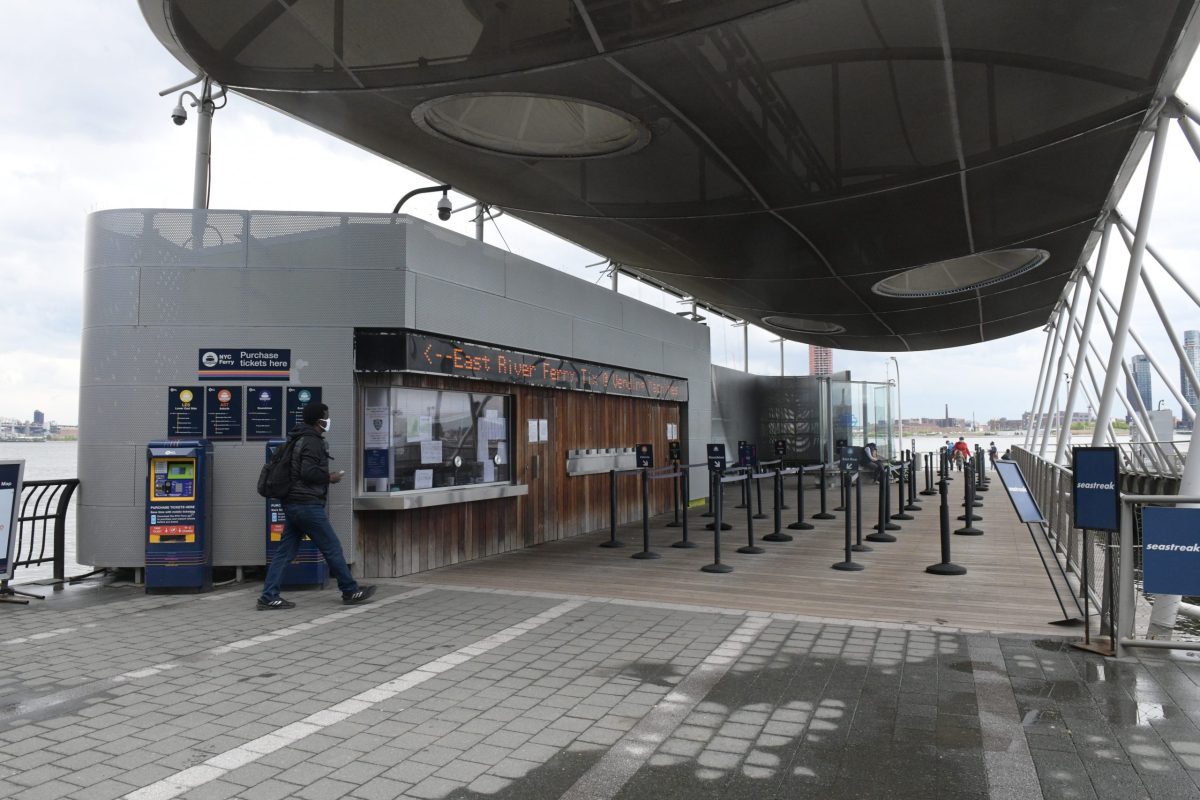The gangways of NYC Ferry craft and many of the terminals have a desolate feel to them after almost a month and a half of ridership loss have forced service reductions and other cost saving measures on the service.
While an unexplained spike in use during the first week of May was an outlier to the new normal of 90% fewer rides, the Economic Development Corporation said Tuesday it remains confident essential workers are still utilizing NYC Ferry as a transportation option — despite a lack of real data to confirm it.
The last week of April in 2019 saw 97,256 riders; a year later, only 19,851 used Mayor Bill de Blasio’s 2017 answer to subway transit woes, operated by the EDC and Hornblower.
“NYC Ferry has been operating on a modified schedule for several weeks as we continue to serve our essential and frontline employees during this challenging time,” EDC spokesman Chris Stapleton said. “By running these modified schedules, NYC Ferry reduced service by 30% and is seeing significant savings. We’re continuing to look at ways to improve cost-savings and are in active discussions to further reduce costs in anticipation of next year’s budget.”

Along with the 30% reduction in service, NYC Ferry enacted a plan to run only the smallest and most fuel-efficient craft on the seven routes along the waterways of the city.
The MTA, at nearly the beginning of the pandemic in March, saw ridership plummet over 92%, where it has steadily remained. But the ferries are in slightly better shape statistically — though the busiest route, East River, has seen a drop from the heights of 46,241 last year to 7,480.
Warm weather has not been enough to keep the Rockaway route afloat either.
Last year it saw 8,878 riders compared to the most recent 2,502. The Astoria route saw 15,705 compared to 3,404 now.

The question of funding shortfalls in the upcoming city budget still lingering for the service, long criticized as too heavily subsidized by the de Blasio administration, which pays up to $9.34 per ride.
Some, however, are confident that the ferries will be the best transit option in the future for social distancing.
Queens Chamber of Commerce President Tom Grech, in a recent op-ed, claimed this would be the case as the COVID-19 pandemic subsides and new normal takes hold for New Yorkers hoping to keep the virus at bay.
But the question still stands as to how this option can be made available for all New Yorkers, especially those in landlocked communities without easy access to the waterfront.


















